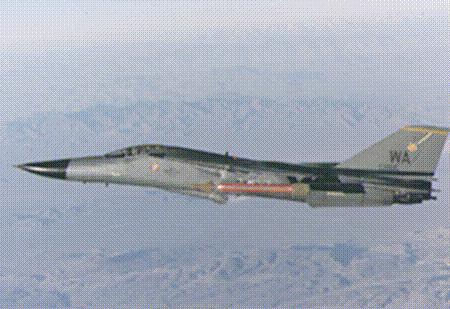
The GBU 28 "Bunker Buster" was put together in record time to support targeting of the Iraqi hardened command bunker by adapting existing materiel. The GBU-28 was not even in the early stages of research when Kuwait was invaded. The USAF asked industry for ideas in the week after combat operations started. The bomb was fabricated starting on 1 February, using surplus 8-inch artillery tubes. The official go-ahead for the project was issued on 14 February, and explosives for the initial units were hand-loaded by laboratory personnel into a bomb body that was partially buried upright in the ground outside the laboratory in New York. The first two units were delivered to the USAF on 16 and 17 February, and the first flight to test the guidance software and fin configuration was conducted on 20 February. These tests were successful and the program proceeded, with a contract let on 22 February. A sled test on 26 February proved that the bomb could penetrate over 20 feet of concrete, while an earlier flight test had demonstrated the bomb's ability to penetrate more than 100 feet of earth. The first two operational bombs were delivered to the theater on 27 February.
The Air Force produced a limited quantity of the GBU-28 during Operation Desert Storm to attack multi-layered, hardened underground targets. Only two of these weapons were dropped in Desert Storm, both by F-111Fs. One weapon hit its precise aimpoint, and the onboard aircraft video recorder displayed an outpouring of smoke from an entrance way approximately 6 seconds after impact. After Operation Desert Storm, the Air Force incorporated some modifications, and further tested the munition. The Fy1997 budget request contained $18.4 million to procure 161 GBU-28 hard target penetrator bombs.

